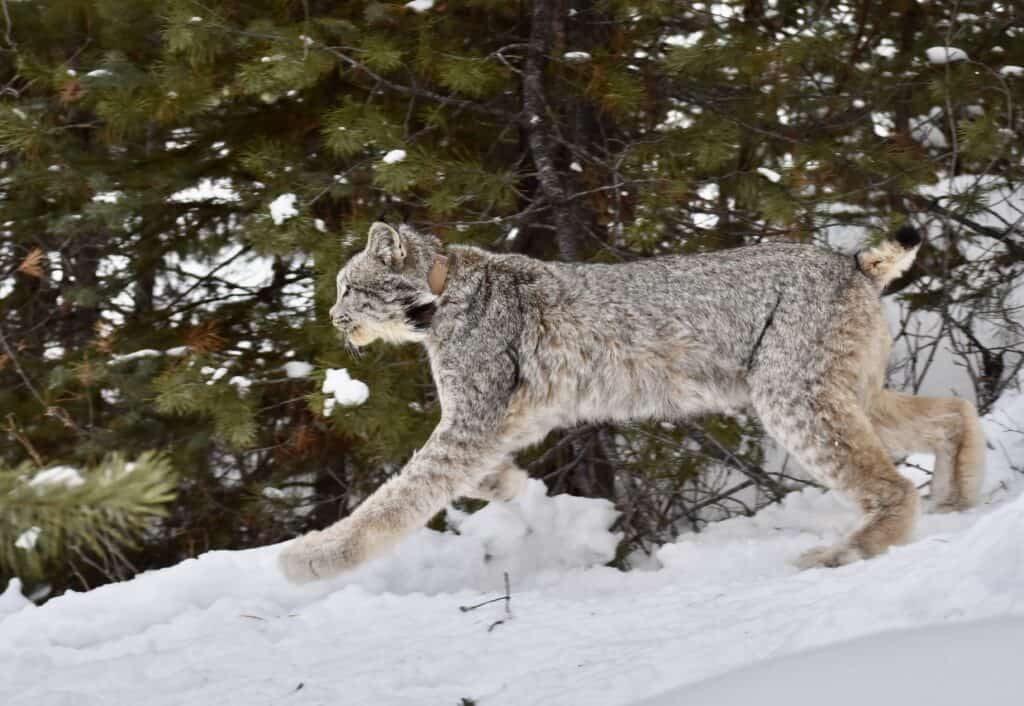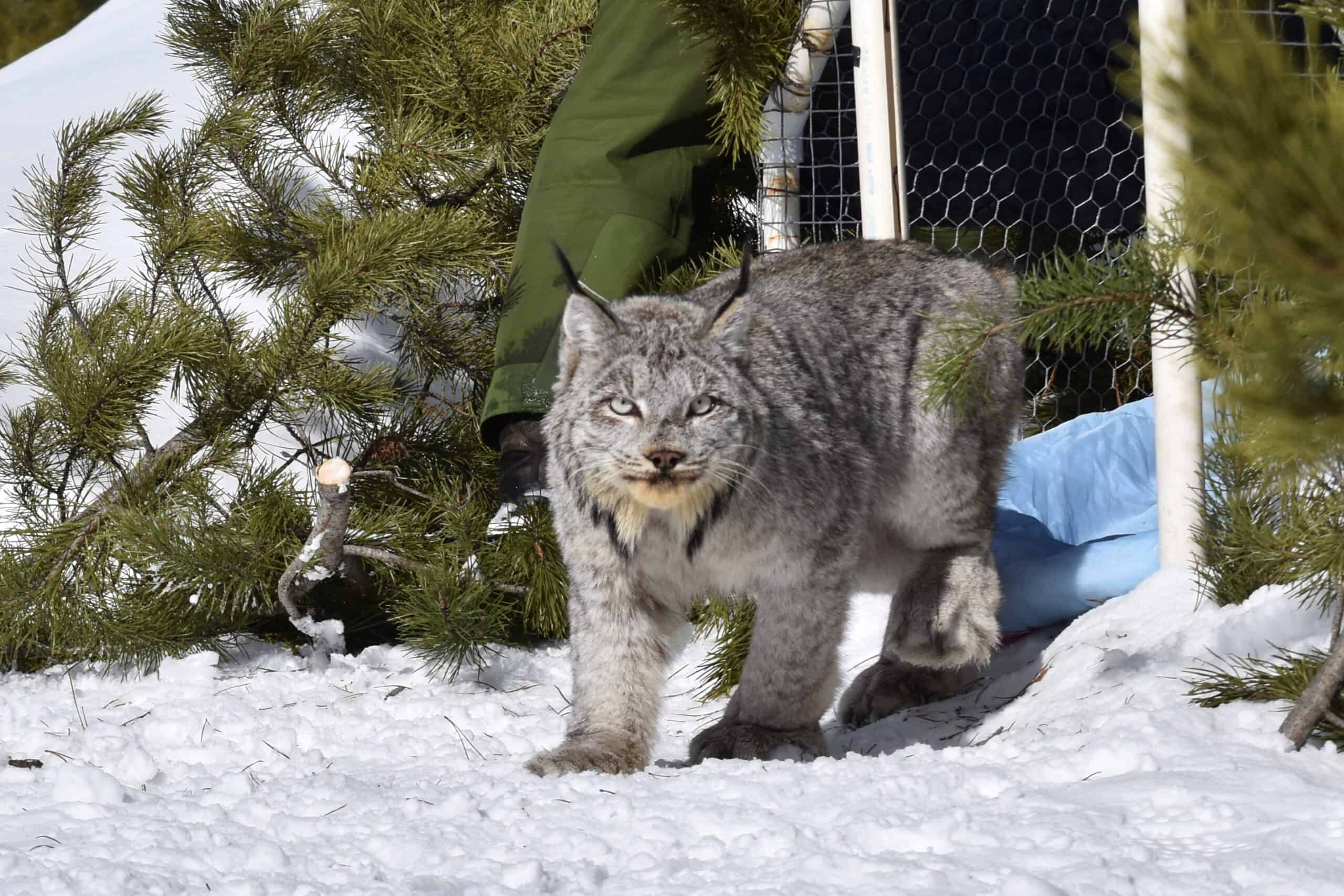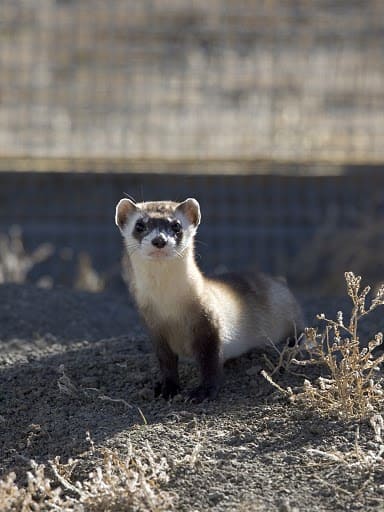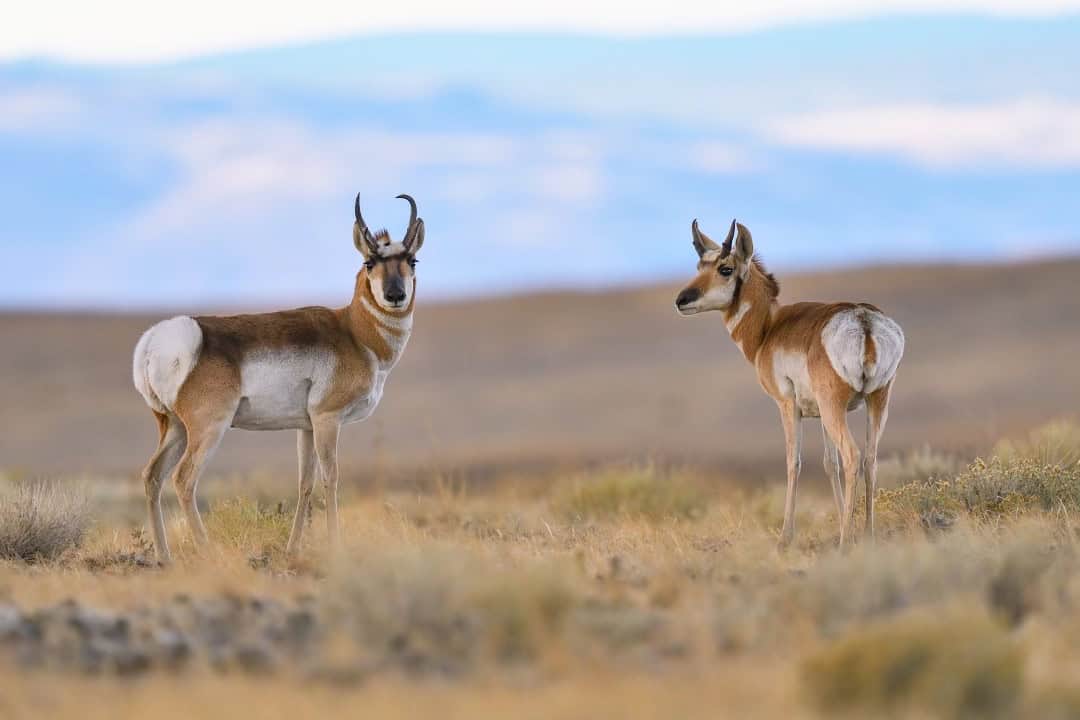Share this article
Wildlife Featured in this article
- Canada lynx
- Spruce beetle
- Snowshoe hare
TWS2022: Canada lynx tolerate beetle kill forests
The felines follow their primary prey—snowshoe hares
While spruce beetles may kill large swaths of trees in Colorado, lynx still use these seemingly dead forests.
“Lynx preferentially use forests with high beetle impacts,” said John Squires, a research wildlife biologist with the U.S. Forest Service, during a research presentation at The Wildlife Society’s 2022 Annual Conference in Spokane.
Colorado Parks and Wildlife reintroduced Canada lynx (Lynx canadensis), considered threatened by the U.S. Fish and Wildlife Service, into the state in the from 1999 to 2006—they had been extirpated sometime earlier in the 20th century. Meanwhile, spruce beetles (Dendroctonus rufipennis) have been killing massive numbers of trees in Colorado. The beetles are native to Colorado, but as wildfire and climate change improve conditions for the insects, the beetles are increasing exponentially along with the damage they cause. The Forest Service often conducts salvage logging in these areas that are often considered dead after large beetle outbreaks.
Salvage logging is sometimes seen as a way to speed up forest regeneration after large beetle kills. But researchers weren’t sure whether keystone species were still using these large tracts of dead spruce. A spruce beetle outbreak ramped up in the San Juan Mountains in southwestern Colorado from roughly 2007 to 2014, killing 90% of spruce in some areas. Squires and his colleagues saw an opportunity to learn more about how Canada lynx were using these areas.
The team trapped Canada lynx from 2015 to 2017 and fit them with GPS collars. They tracked them in areas affected by various degrees of spruce beetle infestation as well as areas without infestations, according to research published in 2020 in Forest Ecology and Management.

In models that combined the tracking data with maps of beetle kills, they found that instead of avoiding beetle kill forests, lynx actually seemed to prefer these areas, especially in places where the dead spruce trees had large-diameter tree trunks.
Squires said this likely has to do with the increased presence of snowshoe hares (Lepus americanus) in these beetle kill areas. The reason why hares may like these areas likely has to do with the way the forest recovers after beetle kills.
While beetles kill spruce, they leave the fir trees in the forest alone. The fir trees thrive, since spruce trees aren’t blocking much sunlight after they die. The larger the spruce, the more sunlight is opened up when they die. The spruce also provides a lot of cover for the ground, which snowshoe hares prefer.
This finding means that salvage logging may clash with lynx conservation in Colorado, since forestry companies also prefer the large-diameter tree trunks that the cats favor.
As a result, Squires said that salvage logging could be conducted in ways that may better take lynx into account. Salvaging in the winter, for example, might not be as bad since the understory that hares prefer won’t be around in that season anyway.
As part of the research, Squires and his colleagues created a predictive map that shows which areas of beetle kill forests will likely be more important for lynx.
Some forests are already using this model. It has changed the way that the U.S. Forest Service manages the Rio Grande National Forest, for example.
Header Image: Researchers captured lynx and fitted them with tracking collars. Credit: Rocky Mountain Research Station – Northern Rockies Lynx study.








